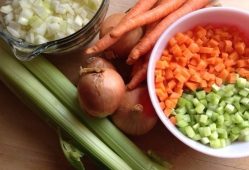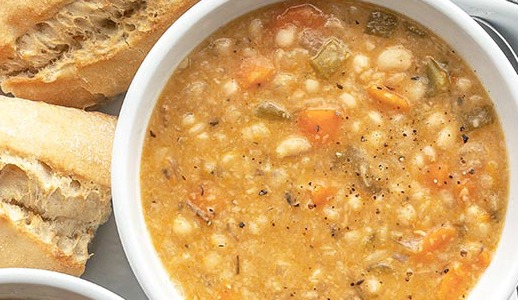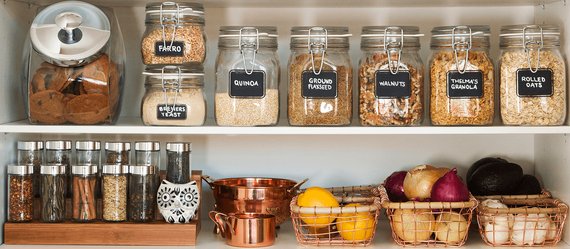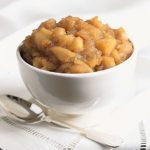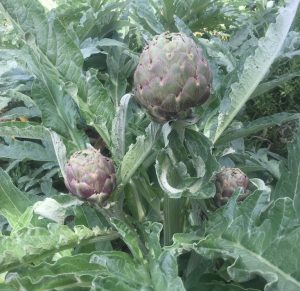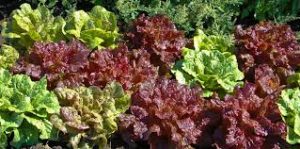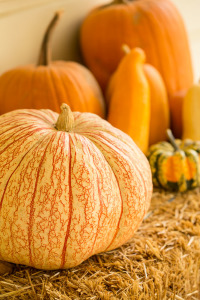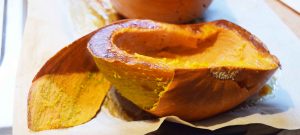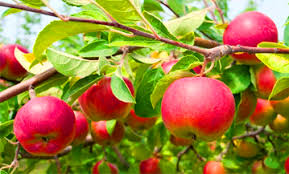
Apples are the ultimate fruit, low in calories with no fat, sodium or cholesterol. The pectin in apples actually helps to dissolve the cholesterol in one’s blood stream. High in fiber, anti-oxidants, potassium, niacin and a variety of vitamins, apples are a near perfect fruit. To get the most of the nutrition from an apple, eat organic apples with the peel on, most of the pectin lies just below the skin.
How to choose and store your apples…..
Choose organic apples as apples have topped the Environmental Working Groups ‘Dirty Dozen’ list, which identifies the most pest laden fruit and vegetables. You’ll want to eat the skin of the apple as disease-fighting pectin (fiber) lies directly under the skin
Select firm fruit with no bruises or scars and treat them gently.
Don’t wash your apples until you’re ready to use them.
Keep them in a cool place, your fruit drawer of the refrigerator is fine but don’t store with other fruit. Apples give off a gas, ethylene, which will ripen your other fruit faster. Some apples will keep weeks in the refrigerator. They will keep a few days on the counter.
How to choose which to use for baking or eating? Here’s a quick list:
Cooking
Ambrosia
Braeburn
Cameo
Golden Delicious
Honeycrisp
Jazz
Jonagold
Jonalicious
Jonathon
McIntosh
Pink Lady
Red Delicious
Fresh Eating
Ambrosia
Envy
Fuji
Gala
Golden Delicious
Honeycrisp
Jazz
Opal
Pink Lady
Sweetie
Oven Roasted Pork Chops
Serves 2 to 4
- For the brine (optional)
- 3 cups cold water, divided
- 3 tablespoons kosher salt
- 1 smashed garlic clove, 1/2 teaspoon black peppercorns, 1 bay leaf
- For the chops:
- 2-4 center cut, bone-in pork chops, 1-inch thick or more
- Olive oil
- Sea salt and fresh ground pepper
- Fresh applesauce, optional as a side
Brine the pork chops if you have time, brining the pork makes it more tender and juicier.
Bring 1 cup of the water to a boil, add the salt, garlic, peppercorns and bay leaf to the water, and stir to dissolve the salt. Add 2 more cups of cold water to bring the temperature of the brine down to room temperature. Place the pork chops in a shallow dish and with the brine, if the chops aren’t covered add additional water and salt (1 cup water to 1 tablespoon salt) until the chops are submerged. Cover the dish and refrigerate for 30 minutes or up to 4 hours.
Heat the oven to 400°. Put a skillet that can hold the chops into the oven while it heats.
If you brined the chops remove and dry both sides, rub with olive oil and season with salt and pepper.
When the oven is preheated remove the skillet and set over a medium high heat on the stove. Sear the chops on both sides quickly, if they brown quickly turn the heat down slightly. You might want to open your windows and turn on a fan, the chops may smoke when you add them to the pan. When browned slide a probe thermometer into the middle of the chop without touching the bone and set to 140°, place the pan in the oven and cook until the thermometer’s alarm goes off. Remove the chops to a plate and let rest about 5 min. They will cook fast, 5-10 min. DO NOT OVERCOOK.
Serve with homemade applesauce and oven roasted potatoes.
Herb Roasted Potatoes
- 1 pound Dutch Yellow Potatoes*, Yukon Gold or fingerling potatoes, cut in half lengthwise
- salt and pepper
- olive oil, as needed
- 1 shallot, chopped
- 1 tablespoon Italian parsley, minced
- 1/2 tablespoon chives, minced
- 2 tablespoons butter or olive oil
Preheat oven to 400°.
Place potatoes on foil lined baking sheet; season with salt and pepper and toss with just enough oil to lightly coat potatoes.
Bake for approximately 35 minutes. The last 10 minutes add shallots and herbs.
Toss with butter or olive oil.
*Dutch Yellow Potatoes are available from Melissas Produce
Order potatoes from Melissas Produce, click here
Applesauce Cake
- Cake:
- 2 cups all-purpose flour
- 2 teaspoons baking powder
- ½ teaspoon baking soda
- ½ teaspoon salt
- 1 teaspoon cinnamon
- ½ teaspoon ground ginger
- 1 stick unsalted butter, softened
- 1 cup packed light brown sugar
- 1 teaspoon pure vanilla extract
- 2 large eggs
- 1 ½ cups cinnamon applesauce
- ½ cup walnuts chopped walnuts
- Frosting:
- 5 oz cream cheese softened
- 3 tablespoons unsalted butter, softened
- ¼ teaspoon pure vanilla extract
- 1 cup confectioners sugar
- ½ teaspoon cinnamon
Preheat oven to 350°F with rack in middle. Butter a baking dish.
Cake:
Whisk together flour, baking powder, baking soda, salt, and spices.
Beat butter, brown sugar, and vanilla with an electric mixer at high speed until pale and fluffy, 2 to 3 minutes. Add eggs 1 at a time, beating well after each addition, then beat in applesauce. At low speed, mix in flour mixture until just combined, then stir in walnuts.
Spread batter evenly in pan and bake until golden-brown and a wooden pick inserted into center comes out clean, 40 to 45 minutes. Cool in pan 15 minutes. Run a knife around edge of cake to loosen, then invert onto a plate. Reinvert cake onto a rack to cool completely.
Frosting:
Beat cream cheese, butter, and vanilla with an electric mixer at high speed until fluffy. Sift confectioners sugar and cinnamon over cream cheese mixture, then beat at medium speed until incorporated.
Spread frosting over top of cooled cake.
Easy Applesauce
- 3 pounds organic apples, Fuji, Gala, Honeycrisp or Jonagold
- 2/3 cup apple juice, orange juice or water
- 8 tablespoons sugar
- 3 teaspoons cinnamon
- 1/4 teaspoon nutmeg
Core, peel and cut the apples into medium sized pieces. Place all ingredients into a saucepan with lid and simmer over low heat until apples are very tender, about 45 minutes. Put through a food mill to create a soft creamy applesauce or use a potato masher and serve chunky.
Pressure cooker or Instant pot:
Combine all the ingredients in the container, cover and lock into place. Press manual button and set timer for 4 min. Let the closed pressure cooker rest for about 10 minutes, release any pressure that’s left.
Carefully open lid, angling it away from you to avoid getting burned by the steam. Use a potato masher to crush with a slightly chunky consistency or put through a food mill for a smoother one.
Get one now!


